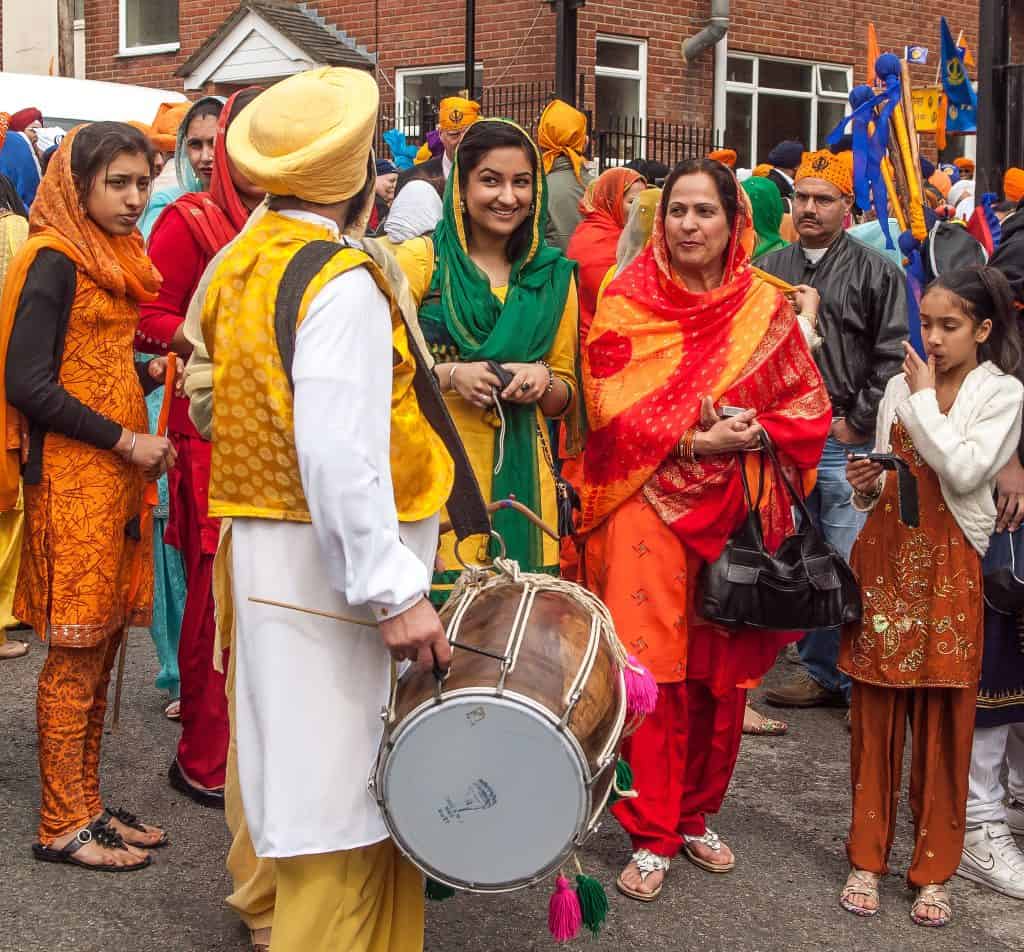By Hardeep Singh
The Office for National Statistics (ONS) has released statistics exploring outcomes from the 2021 Census for those who identify as Sikh. The data, for England and Wales, is compared with the broader population, highlighting a variety of trends, including comparative levels of home ownership, employment, educational attainment, health, and marriage.
‘Sikh’ as religion and ethnic group
In the 2021 Census, 525,865 people identified as Sikh, which is just under 1 per cent of the population and an increase from 430,020 in 2011. It is broadly younger than the wider population.
Of those who identified as Sikh, 81 per cent — 426,230 — said their religion was Sikh alone. There are, however, some interesting nuances when it comes to ethnicity.
Of those who identified as Sikh, 0.3 per cent — 1,725 — said this was their ethnicity, not their religion. Of this group, 55.4 per cent did not record their religion, 13.6 per cent said they were Muslim, 8.7 per cent Christian, and 12 per cent no religion.
The number of exclusively “ethnic” Sikhs has dropped from 6,862 in 2011. The overall number of those who identified as “ethnic Sikhs” has gone down relative to the “all Sikh” population in 2021 (18.9 to 19.3 per cent).
This is despite a contested campaign by a number of Sikh organisations to include a separate Sikh ethnic tick box in the 2021 Census. This did not succeed, so people had to tick against a broad ethnic group based on a region or country, and then choose to add in writing that they identified as Sikh.
Another 2021 Census cohort, 97,910, identified as Sikh in both ethnic group and religion, an increase from 2011.
Health and wealth
Sikhs are healthier than the wider population and more own their homes. The majority, 84.9 per cent, reported “very good” or “good” health, compared with 82 per cent of the England and Wales population.
Home ownership rates are high with 77.7 per cent reporting they owned their homes outright, (or with a mortgage, loan, or shared ownership) compared with 62.7 per cent for the rest of the population.
Just under a third live in multi-family and multi-generational families, compared with 11.1 per cent for the rest of the population. Sikhs are more likely to be married (and married younger) — 61 per cent compared with 44.4 per cent the rest of the population. They are also less likely to be divorced.
Education and employment
The statistics indicate high levels of educational attainment among Sikhs. Just over a third, 36.7 per cent, said they had a qualification, at least equivalent to a bachelor’s degree, or post-graduate qualifications, compared with 33.8 per cent for the full population. Older age groups, however, had fewer qualifications in comparison.
Seventy per cent were in employment, compared with 70.9 per cent for the population. The most common jobs were professional roles, such as doctors and teachers, of whom there were 21.2 per cent. The second most common group — managers, directors, and senior officials — came in at 14.4 per cent.
Unsurprisingly, those identifying as Sikh comprised the largest proportion of Punjabi speakers (63.9 per cent) in England and Wales.
Jhutti-Johal, professor of Sikh studies at Birmingham University told me: “The data reflects a community which has prospered economically, and one that believes in the institution of marriage. The statistics also show Sikhs more commonly live in multi-generational family households, highlighting in part, a strong commitment to care for elders.”
The 2021 data reinforces themes highlighted in the Bloom Review, with reference to high rates of employment and home ownership among British Sikhs. The report, Does Government “do God”?, which was criticised for its focus on “pro-Khalistan extremism”, said: “British Sikhs tend to place a high value on family life and providing direct support for extended family, especially when they are old or in poor health.”


















